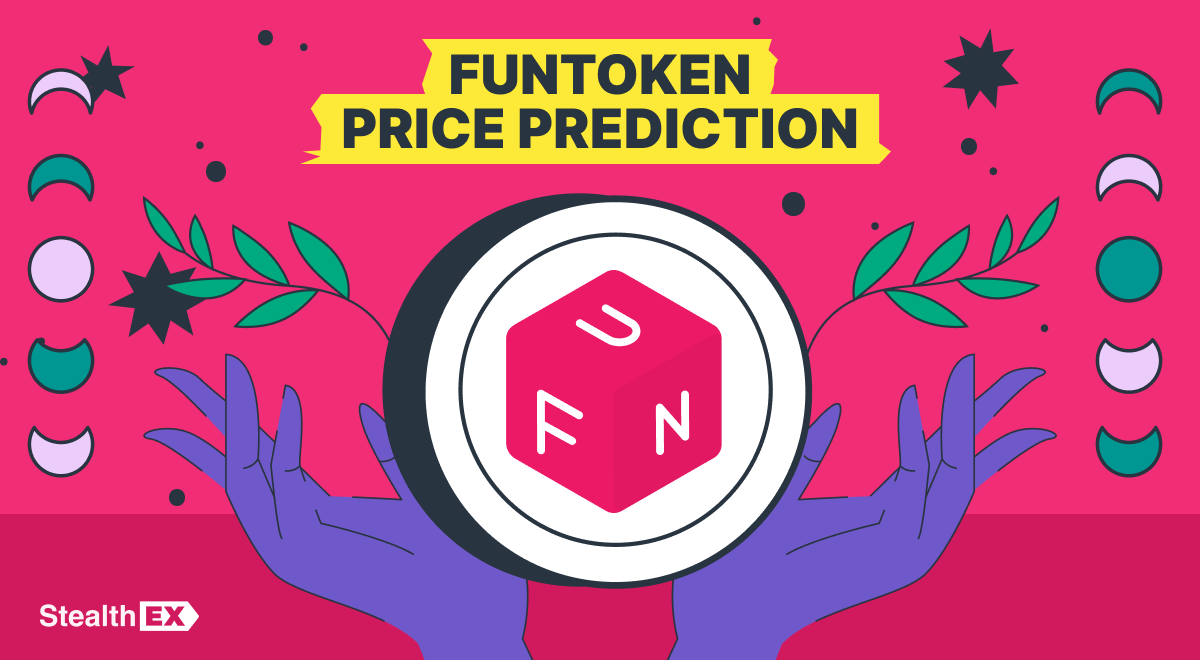What Is a Security Token? Utility Tokens vs Security Tokens

In times when tokens have become popular alternative means of payment and exchange, data tokenization and its models started playing a crucial role in the global economy. In this article, we’ll try to do an overview of security tokens and compare them to utility tokens, which we already talked about in the previous article. Let’s take a closer look at what a security token is.

Article contents
What Is a Security Token?
A security token is a physical or digital device that provides two-factor authentication (2FA) for a user to prove their identity in a login process. It is typically used as a form of identification for physical access or as a method of computer system access. The token can be an item or a card that displays or contains security information about a user and can be verified by the system. A security token is created using tokenization, where the investment criteria are selected. The information is entered into the blockchain, which then creates a token.
In plain language, security tokens are the digital form of traditional investments like stocks, bonds, or other securitized assets. For example, a company that wishes to raise funds for an expansionary project can decide to issue fractionalized ownership of their company through a digital token instead of issuing stock. It could then offer this token to investors on an exchange that allows digital security tokens. However, security tokens must be approved by the Securities and Exchange Commission (SEC).
Security Tokens and Their Benefits
Security tokens offer the following benefits:
- Efficiency. Legacy middlemen can be removed, resulting in more efficient fundraising and trading, reduced settlement times, and lower costs.
- Automation. Security tokens lead to better compliance and can automate payments such as dividends. For instance, jurisdictional regulations can be enforced by programming and customizing compliance rules into each security token’s configuration.
- Transparency. Blockchain can maintain a perfect digital record of ownership and of transactions. This protects security token investors, reduces disputes around record keeping, and mitigates foul play attempts such as the back-dating of documents.
- Improved liquidity. Security tokens can dramatically improve liquidity. Tokenization provides a way to trade traditionally illiquid assets, makes hyper-fractional asset ownership possible, and opens assets up to global investor pools.
- Market access. Investors can diversify their portfolio as they gain access to previously unavailable or traditionally illiquid assets. There are no weekends, holidays, or bank closures, and security token issuers and investors can decide themselves when they want to trade.
- Innovation. Programmable contracts and shared ledgers can create fractionalized real estate, liquid revenue share agreements, and other previously unmanageable or unimaginable offerings.
- Protection. Security tokens also protect your assets. These are valuable and usually confidential. If you protect your access data with security tokens, you are of course also protecting your assets.
Security Tokens and Their Weaknesses
Unfortunately, security tokens also have some disadvantages. If you lose your token or it is stolen, you will no longer have access to your system or asset. The hacker will still need your password, which protects your valuables. However, the token is then no longer needed.
Another disadvantage of security tokens is that they can be hacked. This can happen if you unknowingly pass on sensitive information to an unauthorized person. This is known as man-in-the-middle fraud. Any network connected to the Internet is vulnerable to such an attack.
Are Security Tokens Different from Cryptocurrencies?
Security tokens and cryptocurrencies are nearly identical. They are created by and stored on a blockchain. They are both tokens, but the crucial difference lies in their purpose, intended use, and actual use. A cryptocurrency is designed to be used as currency, money, or payment method. A security token is intended to be used the same way a stock, bond, certificate, or other investment asset is used.
Many cryptocurrencies have been introduced which were not intended to be used as investment instruments. For example, investors and traders noticed that they could reap significant returns from Bitcoin when it was listed on cryptocurrency exchanges. As a result, investors treat Bitcoin as a security token even though it was not designed as one. Moreover, security tokens are not yet available for retail investors on public stock or cryptocurrency exchanges.
Security Tokens Use Cases
First and foremost, security tokens can be put to use in sensitive network systems. This could be an online bank account or trading platform. With their help, you can add an extra layer of security. This means that you use the token in addition to a password to confirm your identity. This additional security measure makes it almost impossible for hackers to get hold of your data.
Another use case is the storage of sensitive data. The security token is then used to authenticate your account. Some store cryptographic keys, a system used in cryptographic currency services such as Bitcoin, but the key must be kept secret. Some use time-sensitive passwords that are matched between the token and the network and reset at constant intervals. Others use biometric techniques such as fingerprint data to ensure that only the owner of the security token can access protected information.
An example of security tokens are tZERO, Pinkdate, Bibox, Polymath and ICONOMI coins. tZERO is a platform that runs blockchain startups with security tokens in accordance with the rules of CES and FINRA. To finance its project, tZERO issued coins whose holders are entitled to quarterly dividend payments.
Utility Token vs Security Token
These are tokens with the help of which users get access to the software utility (or service) of the blockchain platform. They do not promise any benefits, do not give ownership rights to the land, property or other assets of the company, and are not analogs or substitutes for loan agreements. Currently, utility tokens are the most common type of coin. The price of utility tokens during ICO is determined by the issuer – arbitrarily or by the results of economic analysis.
Security tokens, on the other hand, is a financial instrument, the main function of which is to make a profit by increasing the price of an asset and/or activities of third parties. Security tokens give holders the right to: share in profits, dividend payments, company capital, assets or their shares, debt payments, etc.
Key Differences Between Security and Utility Tokens
The main difference between security and utility tokens is the purpose of their emissions. If the coins were issued mainly for the sake of raising funds for something, these are security tokens. And here it does not matter whether it is possible to use tokens as tokens to pay for goods and services on the platform.
As a rule, utility tokens are issued mainly to be used to access the blockchain functionality. For instance, Bitcoin was created to become an alternative to fiat money and remove the monopoly of states to issue money. There are no promises or even hints about possible profit in white paper of Bitcoin, only the principles and technical nuances of the payment system functioning.
Another difference is property rights. Utility tokens do not give ownership of something; it’s just a digital key that helps you start the blockchain mechanism or its individual element: an application, a smart contract or a payment gateway. Security tokens are always entitled to commitment to dividends, physical or digital assets: oil, dollars, patent, real estate, issuer’s credit obligations to the holder of tokens, etc.
Additionally, startups such as Binance, Tron, Ripple, and many others regularly or in some cases destroy (‘burn’) their coins in order to reduce their money supply in the market. This, according to the Law of supply and demand, contributes to the value of the remaining coins. Thanks to this, the SEC can indicate that tokens of such projects meet the criteria of the Howey and Reves’s Family Resemblance Test. Consequently, their emission and distribution must take place within the framework of the legislation on securities. Startups with utility tokens will not burn their coins, because their value lies in accessing the blockchain, not investment returns. It’s like burning a concert or plane ticket.
Security vs Utility Token: Similarities
A similarity between the two is price appreciation. Both types can increase in value over time, so they can create some profits. This potential for profit confuses the characterization of tokens as securities. Determining the type of token is often done with the Howey Test, a series of questions that guides the issuer on what type of token they’re offering. The two main questions of the test ask if the token holder is providing funding and expecting profits from the company, and if the ICOs fundraising depends on profits generated from individuals more so than the actual creators of the endeavor. If the answer to either question is positive, then the company has a security token on their hands.
Conclusion
Tokens are a great tool when used for their intended purpose and in accordance with legal requirements. However, blockchain-cryptocurrency start-ups can‘t avoid regulations over the long-term if the industry is to grow to its full potential. Investors of all shapes and sizes need protection from fraudulent practices, misrepresentations about the nature of the investment contract, and Ponzi schemes. Token holders will lose trust in the system if their reasonable interests aren’t protected, and this is the main similarity that unites both utility and security tokens.
If you’re looking for a place to buy crypto, you can do it privately and without the need to sign up via StealthEX. Our crypto collection has more than 1400 different coins and you can do wallet-to-wallet transfers instantly and problem-free
Just go to StealthEX and follow these easy steps:
- Choose the pair and the amount you want to exchange. For instance, ETH to BNB.
- Press the “Start exchange” button.
- Provide the recipient address to transfer your crypto to.
- Process the transaction.
- Receive your crypto coins.
Follow us on Medium, Twitter, Telegram, YouTube, and Publish0x to stay updated about the latest news on StealthEX.io and the rest of the crypto world.
Don’t forget to do your own research before buying any crypto. The views and opinions expressed in this article are solely those of the author.
crypto world security token Token tokenization utility tokenRecent Articles on Cryptocurrency
 OFFICIAL TRUMP Coin Price Prediction: How High Will TRUMP Crypto Go?
OFFICIAL TRUMP Coin Price Prediction: How High Will TRUMP Crypto Go?  FUNToken Price Prediction: Can FUN Coin Reach $1?
FUNToken Price Prediction: Can FUN Coin Reach $1? 
